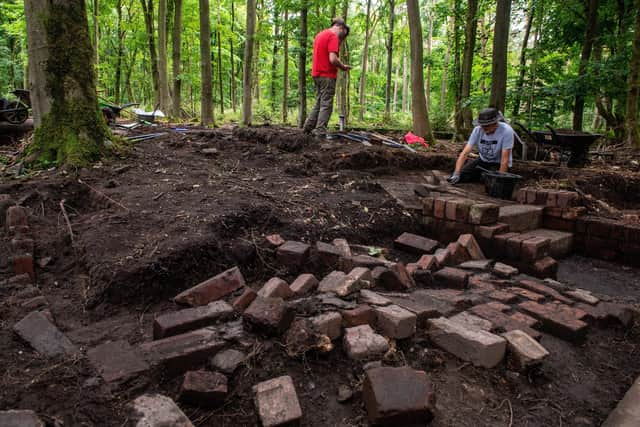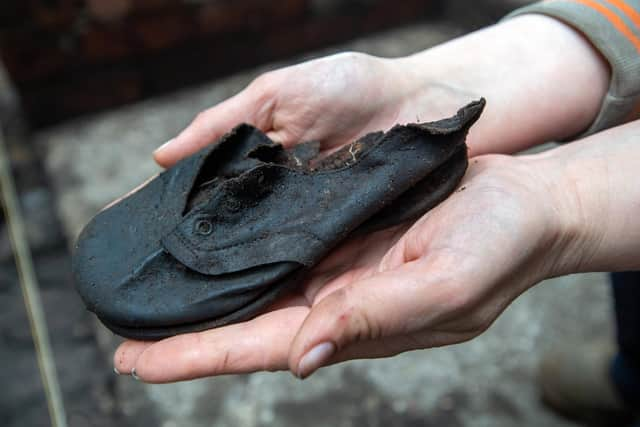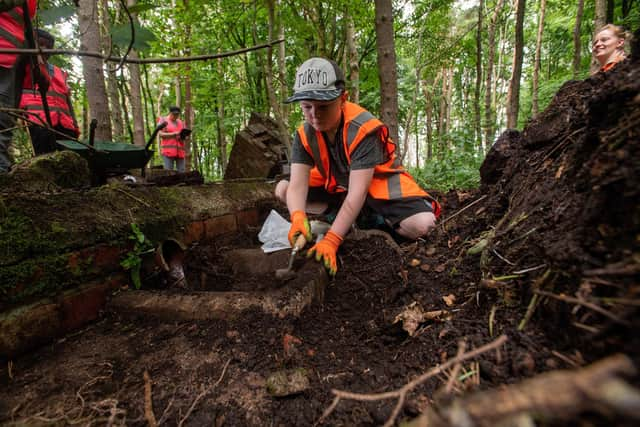Lodge Moor: Dig reveals fascinating finds from UK's largest prisoner of war camp
The weathered concrete bases hidden in a wooded area on the edge of the Peak District National Park, offer little clue to their history.
Probably few of the dogwalkers who go there realise the Lodge Moor camp held at its peak more than 11,000 prisoners during World War Two, including from Germany, Italy and Ukraine.
Advertisement
Hide AdAdvertisement
Hide AdVolunteers have been digging into the floor of the plantation planted over the abandoned camp by the local council in the 1950s, to expose the sturdy concrete bases of huts, which would have once crammed in as many as 70 prisoners.


One of the bases turned out to be a bathhouse, with its plugholes and drainage system intact.
The dig, which ends later this week, has revealed small but fascinating details of the prisoners’ lives, the little gardens they tended on each side of the huts, which would have made life more bearable, says Rebecca Hunt, senior project officer with CFA Archaeology, which has been commissioned by Sheffield and Rotherham Wildlife Trusts to hold a community led investigation.
The prisoners are known to have led a very basic existence, they were fed out of galvanised dustbins and spent hours standing in the wet and cold for roll call. They were squashed into the barracks, or the overflow tent area, with little personal space.
Advertisement
Hide AdAdvertisement
Hide AdThere have been evocative finds, such as a tiny watercolour paint pot - there were artists among the prisoners - as well as leather uppers and a child’s shoe which was perhaps being made on the camp for a local resident’s child.


Ms Hunt explained that the Italian prisoners, who were housed at the camp initially worked on neighrbouring farms, and were given ha’penny tokens to exchange for goods in lieu of real money.
She said: "We have found examples of leather working. We believe the Italians made toys and possibly shoes, so we are slowly getting hints of people living here and how they kept themselves occupied.”
The volunteers also found a dog tag identification disc that had been snapped in half along its perforate centre.
Advertisement
Hide AdAdvertisement
Hide AdNormally they would be broken in two to send half to relatives when the wearer was killed, but this is thought unlikely, with an accident considered a more plausible reason for the break.


The tag reads Schwere Flak Ersatz Abteilung 60 (Heavy Anti-Aircraft Replacement Battalion 60), which was formed in Wismar and was part of Luftgau XI.
As the war dragged on and more Axis soldiers were taken captive, the quality of life on the camp seems to have deteriorated.
Only a small handful of people now have memories of the camp - which started out in World War One as Redmires Camp and was used as a training facility for the Sheffield Pals battalion.
Advertisement
Hide AdAdvertisement
Hide AdThe group is recording oral histories for posterity. Ms Hunt said one of the stories they’d been told was of guards “sneaking the Italians off to the pub”. For some of Lodge Moor’s prisoners, life after the war involved staying in Britain, and several became UK citizens.
